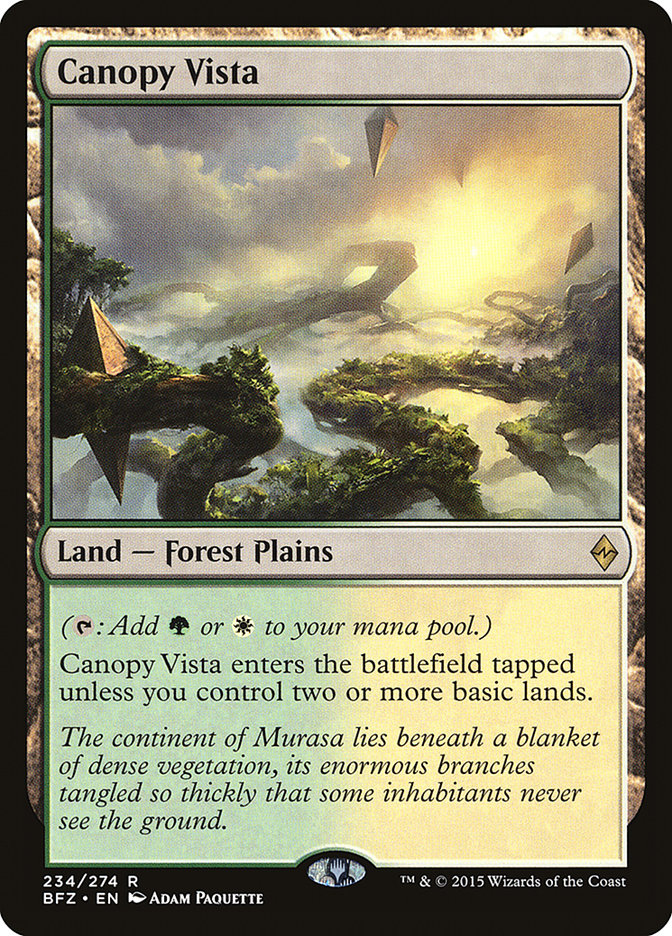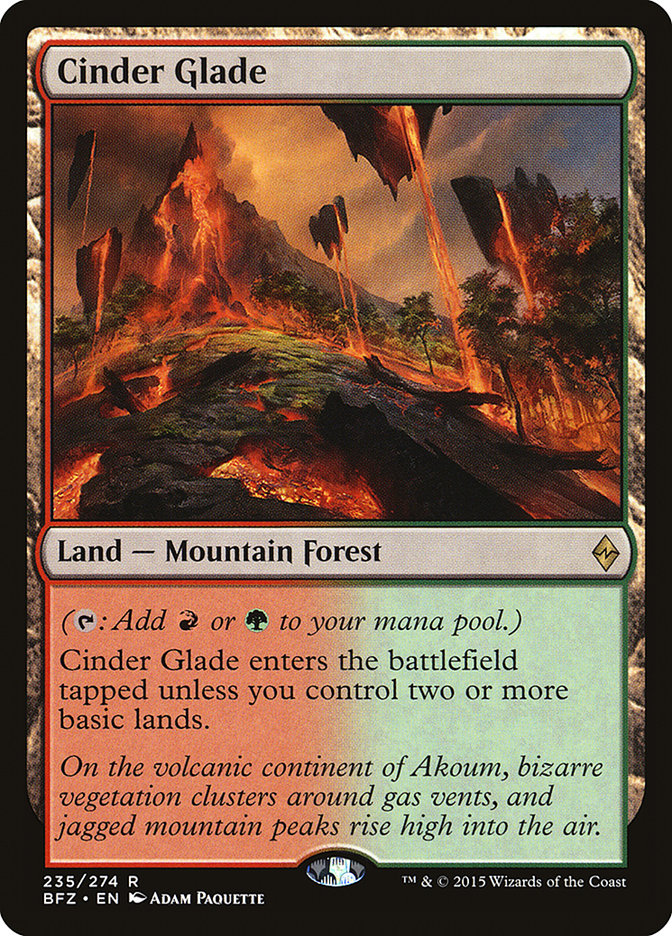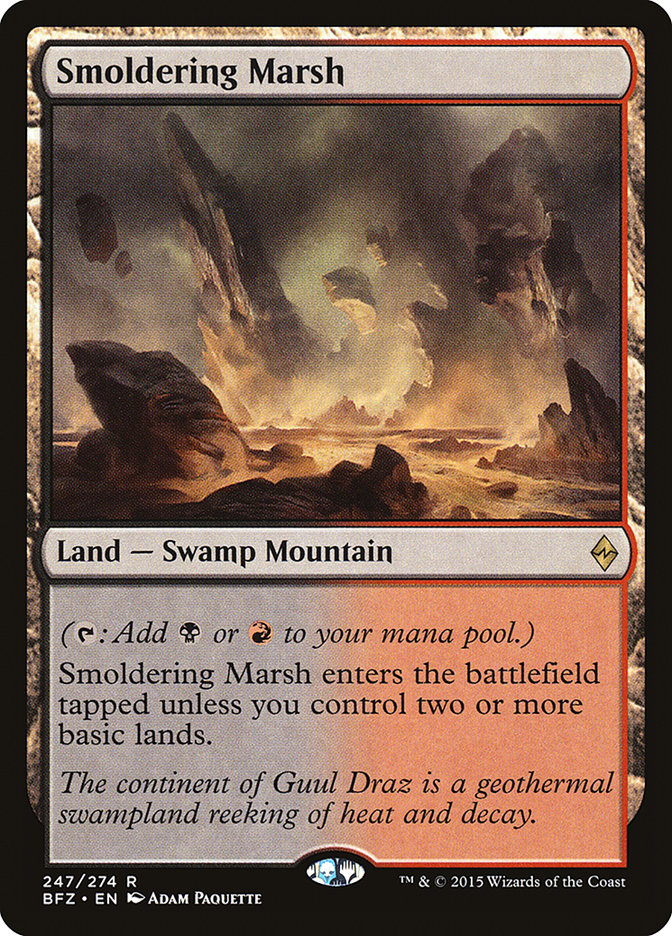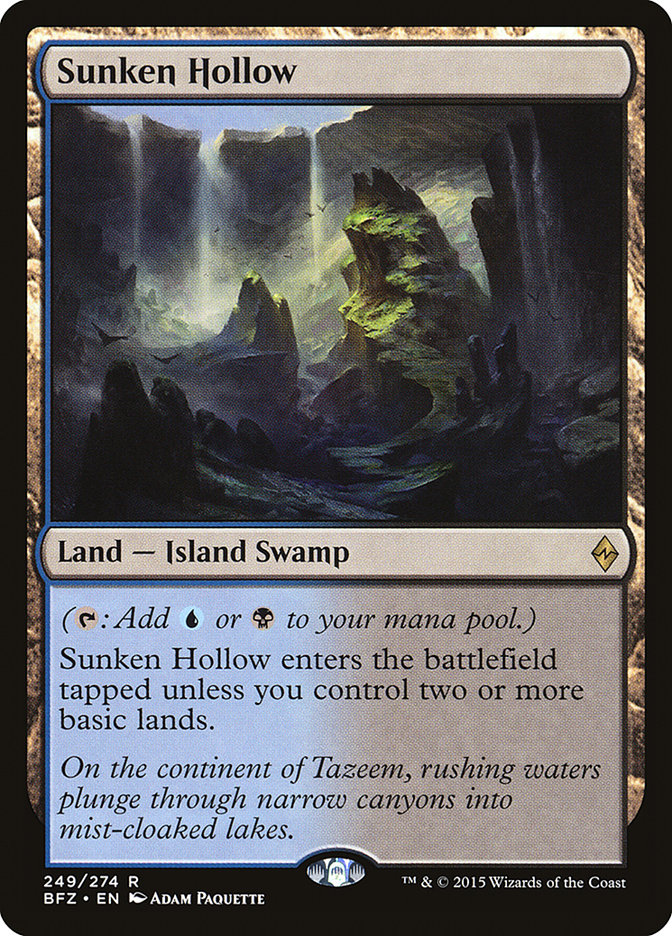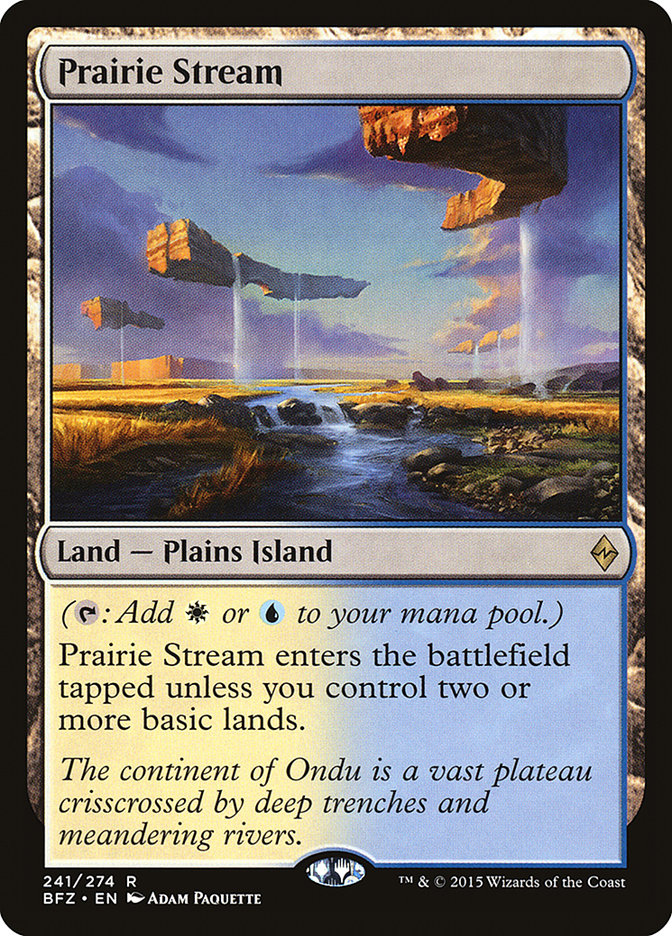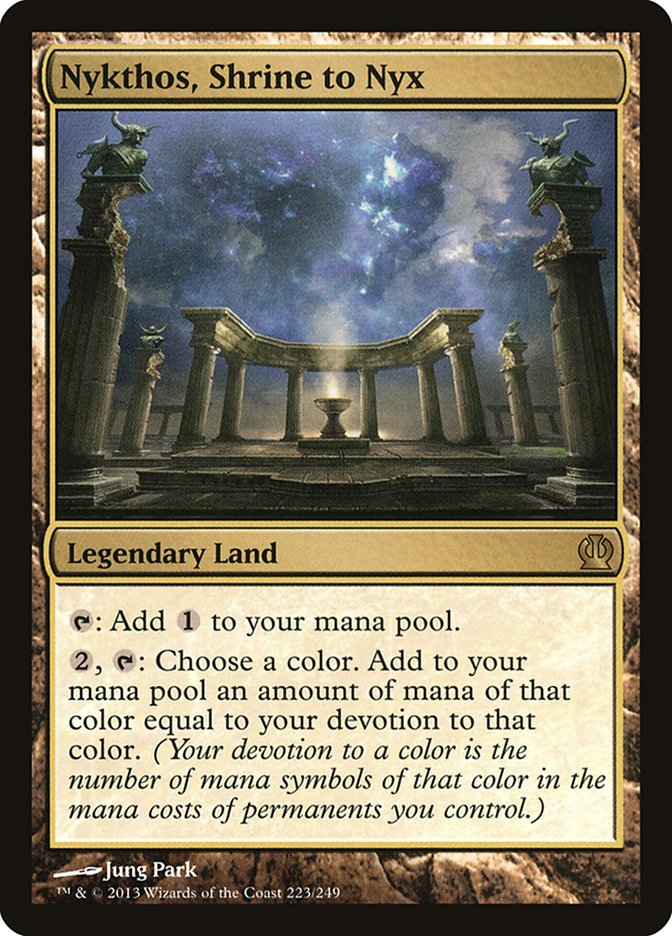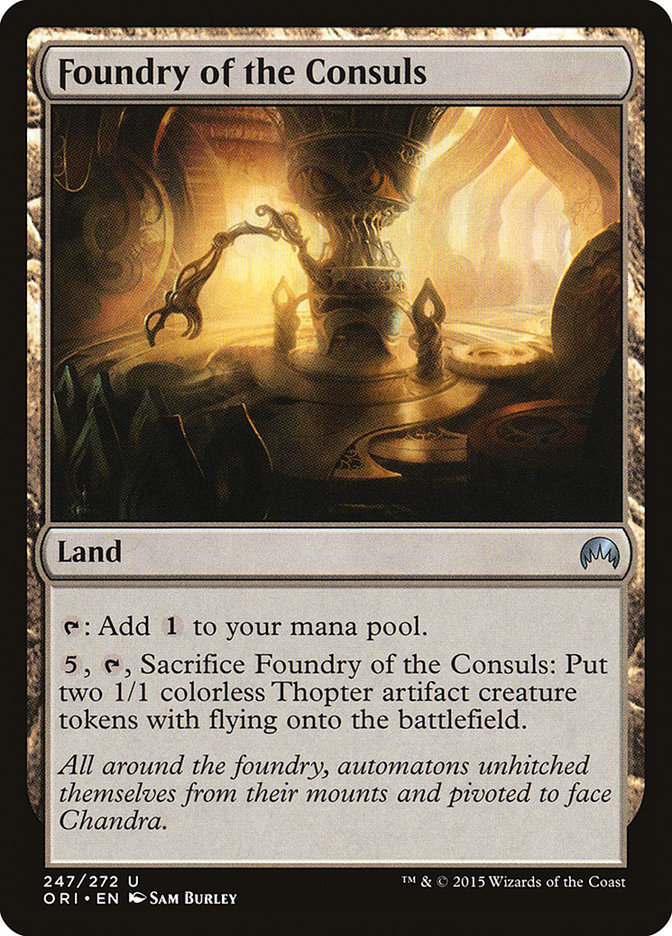Amidst all the drama surrounding the World Championships and the Season Three Invitational last weekend, we were also given our first glimpse of cards from Battle for Zendikar. While it is always true that the most exciting cards to be revealed are planeswalkers and powerful spells, the most influential are typically lands.
Two years ago it was Mutavault and Nykthos, Shrine to Nyx that broke out at Pro Tour Theros as various mono-colored Devotion strategies dominated the tournament. At Pro Tour Khans of Tarkir, it was cards that punished your opponent for having so many enters-the-battlefield-tapped lands, namely Sylvan Caryatid and Elvsh Mystic, as well as three-color aggressive decks that did well.
The available sources of mana determine what kinds of decks are possible in a given format. The mono-colored decks of Theros were possible because powerful Devotion cards provided a payoff for sticking with one color and Mutavault was an incredibly powerful utility land that a mono-colored manabase easily allowed you to play four copies of. Wedge decks did well in Khans Standard because the tri-lands gave you easy access to your colors of mana while the powerful gold cards provided a payoff for being in those colors.
It is easy to focus on cards like Mantis Rider and Siege Rhino that forced players into these colors, but those decks would not have been playable without Mystic Monastery and Sandsteppe Citadel because their mana would have been too inconsistent. Even with the power of these gold cards, the sheer number of enters-the-battlefield-tapped lands in these decks allowed various Elvish Mystic decks (G/R Devotion and G/R Dragons) to shine by getting out ahead of them and eventually going over the top with mana acceleration and large threats.
So how will the available lands in Battle for Zendikar Standard shape the format? To answer this question, let us first look at the important gains and losses from the upcoming rotation.
Gains:
Losses:
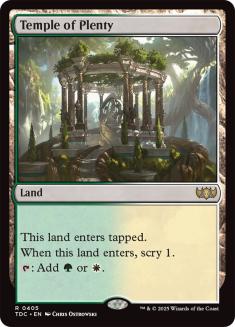
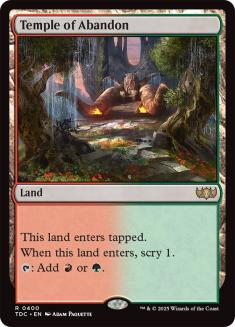
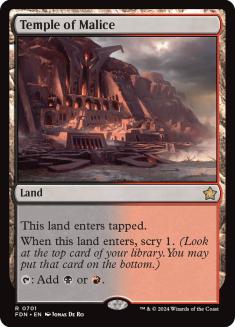
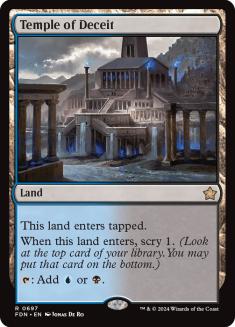
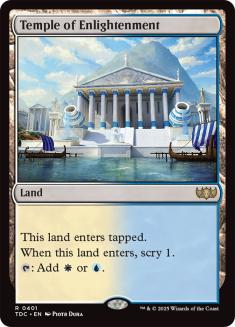
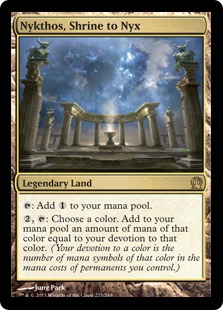
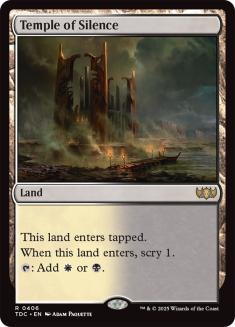
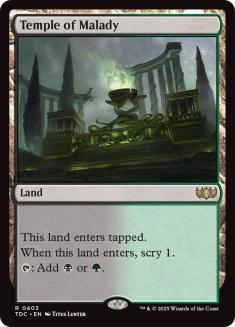
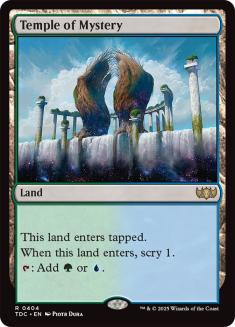
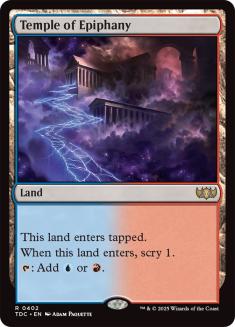
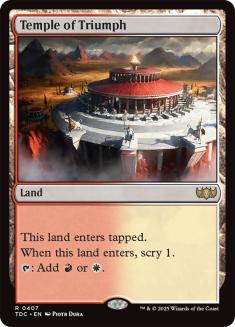
WotC spoiled a cycle of allied-color dual lands that enter the battlefield tapped unless you control two basic lands. Unlike the old cycle of buddy lands, these duals do not care which types of basics you have in play, and they each possess two basic land types, meaning they can be found with fetchlands and count for type-specific Landfall abilities like that on Guardian of Tazeem.
Given that fetchlands can find basics to help these lands out, it should not be too difficult to have them enter the battlefield untapped starting on turn three or four, which is great. Having it enter tapped on turn one is not a huge downside, as you often have nothing to play anyway. It is important to note that they do not play particularly well in large numbers since they do not help other copies enter the battlefield untapped, and they do not play especially well with other cycles of dual lands like the painlands (Llanowar Wastes) and tri-lands (Mystic Monastery).
Given these competing tensions, finding the correct balance of basics with the BFZ duals so that you satisfy your color requirements while hitting your land drops appropriately will be among the most important tasks for deckbuilders in the early days after rotation.
Losing Temples will have two significant effects on Standard. First, the format should speed up as fewer lands will enter the battlefield tapped in the early game, allowing you to deploy threats at a quicker pace. For the last year the Temples have been among the best early plays in the format, and that void will likely be filled by more aggression as players look for what to do on the first turns of the game. The rotation of Sylvan Caryatid and Courser of Kruphix will further aid small creatures and aggressive decks.
Second, without the nearly-free deck manipulation every deck has had access to for the last two years, the overall consistency of decks will diminish. This further favors the early game since their consistency comes more from redundancy in deckbuilding more than anything else and both midrange and control decks will be less likely to find their sweeper on time and more likely to flood out in the mid-game and be unable to stabilize against a strong start.
Now I would like to take some time to examine what various manabases will look like and how that will affect other deckbuilding decisions.
Mono-Colored Decks
As I noted above, Nykthos Shrine to Nyx is a huge loss for Standard and no decks feel it worse than those that best took advantage of Devotion. Nykthos was the primary incentive for being one color or nearly one color, most often with green but also seen with blue, red and lately even with white.
Mono-colored decks need a strong incentive to stay one color because they sacrifice a lot of power to do so, not only in their spell selection but also in their lands. A manabase of 22 basics will be consistent, but it does not offer anything powerful to do if you flood nor any protection from mana screw. Foundry of the Consuls may be playable, but it is not enough of an incentive to stay one color.
With no worthwhile utility lands, the best plan is to play fewer lands because your color requirements are minimized. As such, the loss of Nykthos should relegate mono-colored decks to the ever-present Mono-Red Aggro archetype and its kin White Weenie and Green Stompy if possible.
I will be keeping my eyes out for the next Mutavault, but forgive me if I do not hold my breath. That card may have been a smidge too good for Standard.
Two-Color Decks
Let us consider the allied pairs first. These decks will have access to a fetch land, a BFZ dual, and a gain land (think Swiftwater Cliffs). Importantly, they can use off-color fetch lands to find their BFZ dual, which I expect will be commonplace in these decks, especially if they employ several cards with Delve or Landfall. They can also use an appropriate tri-land as another enters-the-battlefield-tapped dual land, but this should be avoided.
These options should be enough to support these color pairs in either aggressive or controlling shells. A G/W aggressive deck’s manabase may look something like this:
4 Windswept Heath
4 Wooded Foothills
2 Flooded Strand
4 Canopy Vista
6 Forest
3 Plains
This list has a robust twenty green sources and seventeen white sources while having nearly all of its lands enter the battlefield untapped. Note that it is easy to make this list base white by swapping the numbers on the off-color fetches and basics. The key questions in tuning a manabase like this will be what color you need most on turn one and two since your off-color fetches and basics will have to be biased towards that color.
Note that even with twenty total green sources, it would still be difficult for this deck to support a GG creature unless you play a tapped Canopy Vista on turn one, so the mana here is not perfect. A slightly bigger aggro deck may want to employ a few gain lands, but if you have a healthy number of one-drops I would avoid them.
On the other side of the spectrum, a U/B Control deck may have the following manabase:
4 Polluted Delta
4 Flooded Strand
1 Bloodstained Mire
4 Dismal Backwater
4 Sunken Hollow
6 Island
3 Swamp
While Dig Through Time will promote playing more fetchlands, I would imagine that Landfall will be predominantly an aggressive ability and the life loss is a real cost for a control deck. With Silumgar’s Scorn sticking around while Bile Blight, Drown in Sorrow, and Hero’s Downfall rotate, I expect these decks (if they exist) will be base blue so I have biased the fetchlands in that direction. Still, we have more than enough black sources here, twenty, to support Languish.
On first examination, allied color pairs should have excellent mana regardless of your archetype, so I fully expect some decks of these colors to be players in the post-rotation metagame.
However, the future for enemy-color pairs looks much bleaker. With access to only pain and gain lands for both colors, we will have to get creative. Since fetchlands can find BFZ duals, you can use a third color that makes a Shard with that pair to make the mana work.
For example, if you are trying to build a U/R deck, the color that forms a Shard with that pair is black (for Grixis). Thus we can play Polluted Delta and Bloodstained Mire, each of which can find both Sunken Hollow and Smoldering Marsh, thus turning the fetchlands into potential sources of both colors. The manabase would look something like this:
4 Shivan Reef
4 Polluted Delta
4 Bloodstained Mire
2 Smoldering Marsh
2 Sunken Hollow
5 Island
4 Mountain
This twenty-five land manabase has nineteen sources of blue and eighteen sources of red, which is solid. However, at this point, the opportunity cost of playing a Swamp or two and reworking some of the numbers (likely adding more copies of the BFZ duals) for an appropriate black splash is very low, and I would expect most players to do this in order to get more powerful cards in their deck.
With every enemy-color pair easily splashing the third color of its appropriate Shard, I do not expect to see any straight two-color decks of these pairs unless there is some other incentive to do so, perhaps fixing their mana with Dragon lands or a heretofore-unspoiled utility land.
Three-Color Decks
We just explored a bit of what is possible with decks that adhere to the Shards, so I would like to continue to explore such combinations before moving on to the Khans wedge combinations.
The interaction of fetchlands and the new BFZ duals lends itself to three-color decks because these lands need only overlap on one of their types in order to synergize, meaning your fetchlands can find three colors of mana. The Shard combinations have access to two different fetch lands, two BFZ duals as well as a painland, meaning the need for gain lands or tri-lands acting as duals should be minimal.
The most important Shard after rotation in my opinion will be Esper, as the Esper Dragons deck is not losing much and has already proved itself to be a strong deck. With the added fixing of the new lands, it should not have to play subpar options like Caves of Koilos and the added number of fetchlands will help fuel Dig Through Time. Consider the following sample manabase and compare it to the manabase in Alex Hottman’s list from Grand Prix Prague:
2 Haven of the Spirit Dragon
3 Dismal Backwater
4 Polluted Delta
4 Flooded Strand
4 Sunken Hollow
2 Prairie Stream
4 Island
3 Swamp
Discounting Haven, the new manabase has twenty-one blue sources, eighteen black sources, and ten white sources while the old list has nineteen blue, eighteen black, and six white. Given that we are ok with the BFZ duals entering the battlefield tapped early in many cases, this should be enough basics to support them and we can obviously adjust the numbers if it turns out we would like more access to black. Importantly, it would still be difficult to create a full three-color manabase, so keeping one color to a splash is important and will force you to make disciplined deckbuilding decisions.
Other Shards can have mirrored manabases, but with the possibility of stunted starts from enters-the-battlefield-tapped lands it seems as though these decks will not be particularly aggressive. To help build a faster deck you can use more painlands and fewer gain lands, of course, but that biases you towards a more even color distribution, which is typically worse for your consistency. Still, I can definitely see engines like Den Protector + Deathmist Raptor breaking out of the Khans shells if there are powerful cards in these Shard combinations because the mana is definitely there to support them.
Interestingly, the Khans Wedges do not appear to have nearly as much good mana to support them, creating tension with the desire to utilize the powerful gold cards from the block. Each combination has access to a tri-land, a fetchland, a BFZ dual, and two painlands. So an obvious manabase for something like Abzan would look like this:
4 Sandsteppe Citadel
1 Evolving Wilds
4 Windswept Heath
4 Canopy Vista
4 Caves of Koilos
4 Llanowar Wastes
2 Forest
2 Plains
1 Swamp
This manabase has nineteen sources each of both green and white and fourteen sources of black, which is reasonable as long we are not too heavy into black. Unfortunately, cards like Siege Rhino in Abzan or Mantis Rider in Jeskai really want to be cast on curve and we are jeopardizing that with these manabases. It also has the full eight painlands which should generally be avoided, especially if the early format is more aggressive because of the removal of Temples.
As we did with the enemy color pair manabase, I would like to use the natural synergy between fetchlands and BFZ duals to make our mana smoother. Note that we can use Wooded Foothills to find Smoldering Marsh or Flooded Strand to find Sunken Hollow in order to get more virtual three-color lands into the deck and cut down on our painland count. Consider the following manabase:
4 Sandsteppe Citadel
4 Windswept Heath
4 Wooded Foothills
3 Canopy Vista
1 Smoldering Marsh
3 Caves of Koilos
3 Llanowar Wastes
2 Forest
2 Plains
With the same number of lands, this manabase has twenty sources of both green and white and fifteen sources of black. While not improving by much in terms of color density, we did eliminate two painlands and some of the other weak lands (Jungle Hollow, Evolving Wilds, Swamp) which should make the mana smoother. Also, this manabase may be light on basics to support the BFZ duals. Unfortunately, it is difficult to make the mana much more balanced so I expect the Khans wedge-colored decks to suffer a bit as they sacrifice some power for the sake of consistency. This should be interesting for the early format as the decision between powerful cards or more consistent mana will be a key question for deckbuilders to answer.
Of note is that Rattleclaw Mystic provides the Temur decks will significantly better mana than the other Khans, so I could see that wedge breaking out in a big way, especially with powerful cards like Savage Knuckleblade and Sarkhan Unbroken to back it up.
Four- And Five-Color Decks
In the Abzan manabase above, you can see the beginnings of a red splash which could be aided further by the inclusion of Nomad Outpost over Caves of Koilos. The power of tri-lands and the synergy of fetchlands with BFZ duals could enable something of a Five-Color Control strategy, especially if it focuses on Dragons so it can use Haven of the Spirit Dragon and Crucible of the Spirit Dragon for added fixing. I will not go into what such a manabase would look like because it is far too speculative, but I suspect it is possible so look out for that possibility.
Personally I have always preferred to have great mana so I will be exploring the various Shard options, hoping to capitalize on people stumbling while trying to cast their Siege Rhinos and Mantis Riders. There are plenty of other powerful cards in Standard, so don’t be blinded by tunnel vision.
From this initial exploration, I expect the BFZ duals to see plenty of play and to see many more fetchlands in Standard than we saw over the past year. As I mentioned earlier, Landfall and Delve are other reasons to include fetches in your decks, so manabases will likely be biased towards them and away from painlands as a result. So that means one thing:
Get ready for lots of shuffling.

